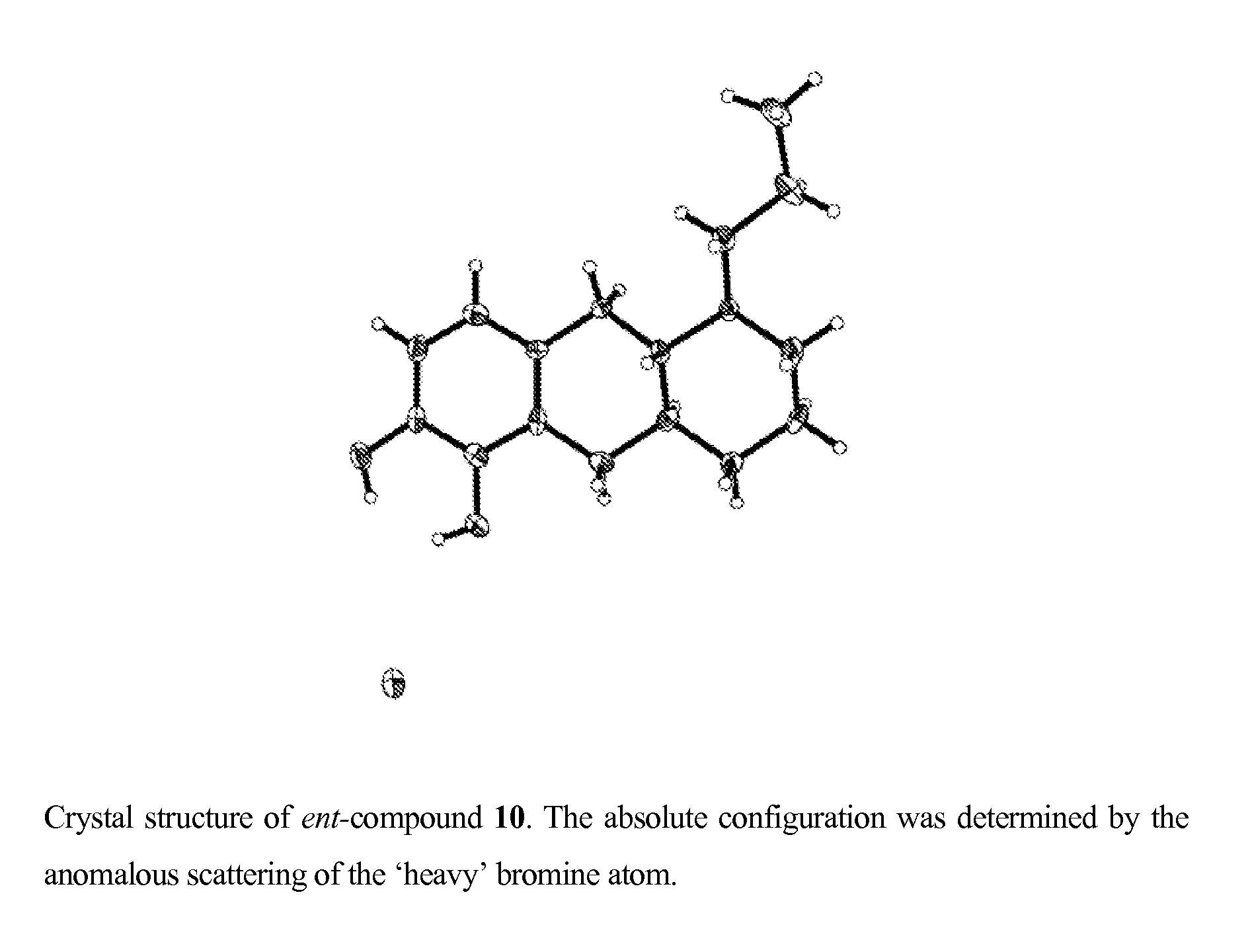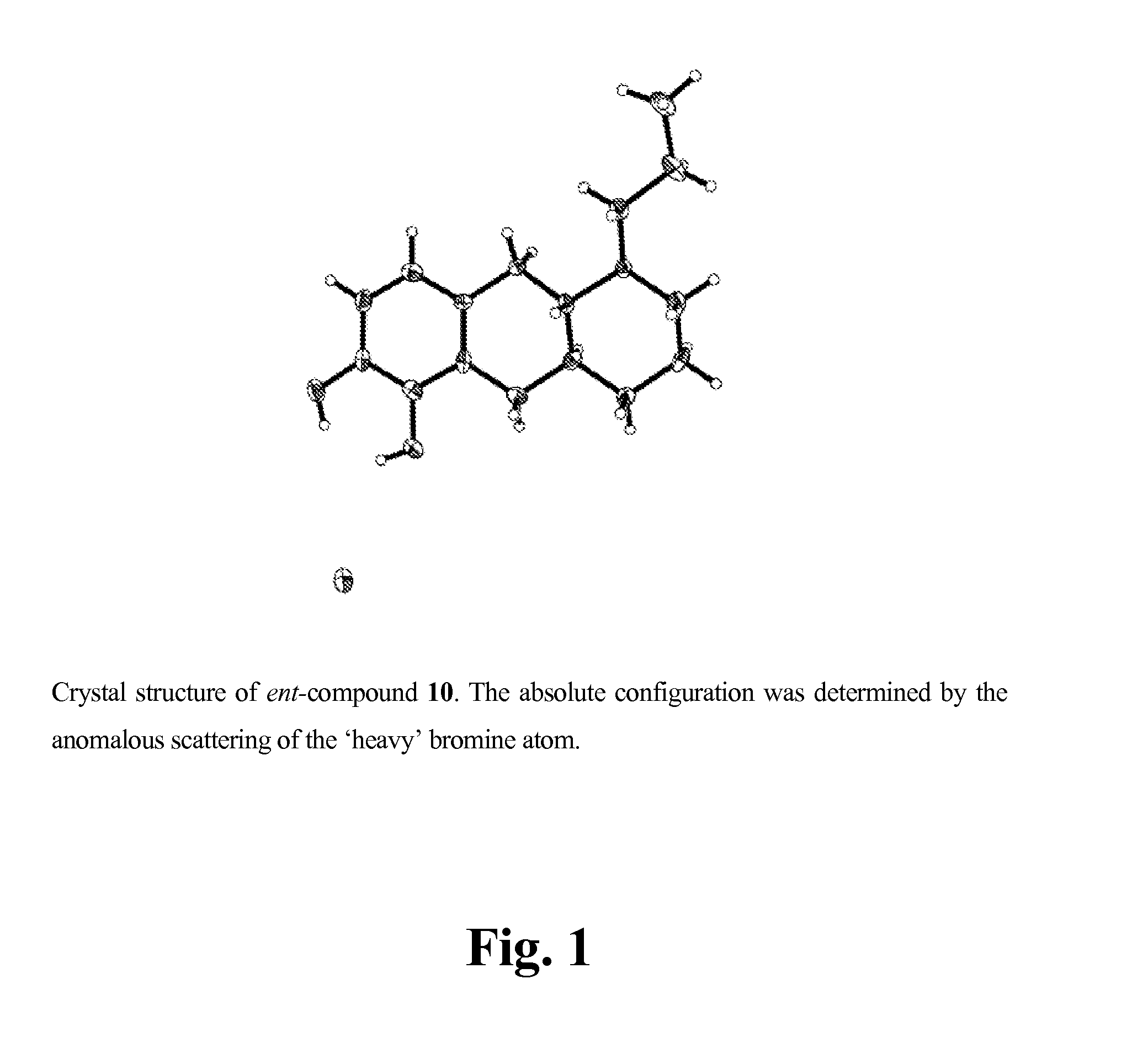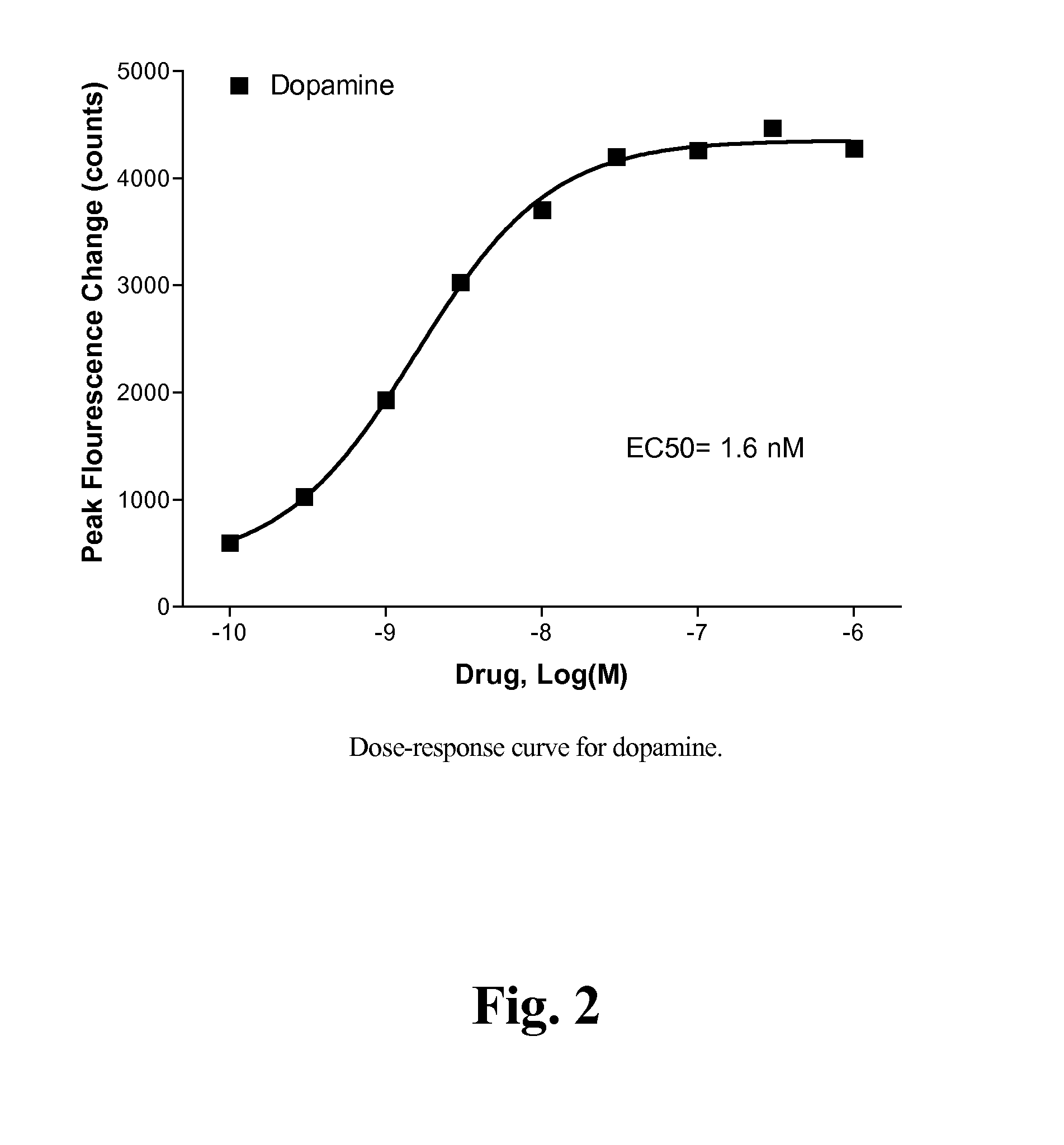Treatment of dyskinesia related disorders
a dyskinesia and related disorder technology, applied in the field of dyskinesia related disorders, can solve the problems of increasing the time of patient response to the drug, increasing the difficulty of dyskinesia treatment, so as to reduce the difficulty of dyskinesia and prevent dyskinesia side effects
- Summary
- Abstract
- Description
- Claims
- Application Information
AI Technical Summary
Benefits of technology
Problems solved by technology
Method used
Image
Examples
example 1
Compounds 11 and 12 Convert into the Catechol-Containing Active Metabolite of Compound 10 Upon in-vivo Administration
[0110]
[0111]The active metabolite (i.e. Compound 10) was found to function as a potent agonist at both the D1 and D2 receptors in-vitro. As discussed in greater detail below, the data generated from in-vivo experiments indicate that this active metabolite possesses a superior profile against other dopamine agonists and is on par with the efficacy seen with L-DOPA / apomorphine treatment.
example 2
Pharmacological Testing of Compound 10
[0112]D1 cAMP Assay
[0113]The ability of the compounds to either stimulate or inhibit the D1 receptor mediated cAMP formation in CHO cells stably expressing the human recombinant D1 receptor was measured as follows. Cells were seeded in 96-well plates at a concentration of 11000 cells / well 3 days prior to the experiment. On the day of the experiment the cells were washed once in preheated G buffer (1 mM MgCl2, 0.9 mM CaCl2, 1 mM IBMX (3-i-butyl-1-methylxanthine) in PBS (phosphate buffered saline)) and the assay was initiated by addition of 100 micro-L of a mixture of 30 nM A68930 and test compound diluted in G buffer (antagonism) or test compound diluted in G buffer (agonism).
[0114]The cells were incubated for 20 minutes at 37° C. and the reaction was stopped by the addition of 100 micro-L S buffer (0.1 M HCl and 0.1 mM CaCl2) and the plates were placed at 4° C. for 1 h. 68 micro-L N buffer (0.15 M NaOH and 60 mM NaOAc) was added and the plates w...
example 3
Pharmacological Testing of Compound 11
[0135]D1 cAMP Assay
[0136]The ability of the compounds to either stimulate or inhibit the D1 receptor mediated cAMP formation in CHO cells stably expressing the human recombinant D1 receptor was measured as follows. Cells were seeded in 96-well plates at a concentration of 11000 cells / well 3 days prior to the experiment. On the day of the experiment the cells were washed once in preheated G buffer (1 mM MgCl2, 0.9 mM CaCl2, 1 mM IBMX (3-i-butyl-1-methylxanthine) in PBS (phosphate buffered saline)) and the assay was initiated by addition of 100 micro-L of a mixture of 30 nM A68930 and test compound diluted in G buffer (antagonism) or test compound diluted in G buffer (agonism).
[0137]The cells were incubated for 20 minutes at 37° C. and the reaction was stopped by the addition of 100 micro-L S buffer (0.1 M HCl and 0.1 mM CaCl2) and the plates were placed at 4° C. for 1 h. 68 micro-L N buffer (0.15 M NaOH and 60 mM NaOAc) was added and the plates ...
PUM
| Property | Measurement | Unit |
|---|---|---|
| temperature | aaaaa | aaaaa |
| volume | aaaaa | aaaaa |
| volume | aaaaa | aaaaa |
Abstract
Description
Claims
Application Information
 Login to View More
Login to View More - R&D
- Intellectual Property
- Life Sciences
- Materials
- Tech Scout
- Unparalleled Data Quality
- Higher Quality Content
- 60% Fewer Hallucinations
Browse by: Latest US Patents, China's latest patents, Technical Efficacy Thesaurus, Application Domain, Technology Topic, Popular Technical Reports.
© 2025 PatSnap. All rights reserved.Legal|Privacy policy|Modern Slavery Act Transparency Statement|Sitemap|About US| Contact US: help@patsnap.com



